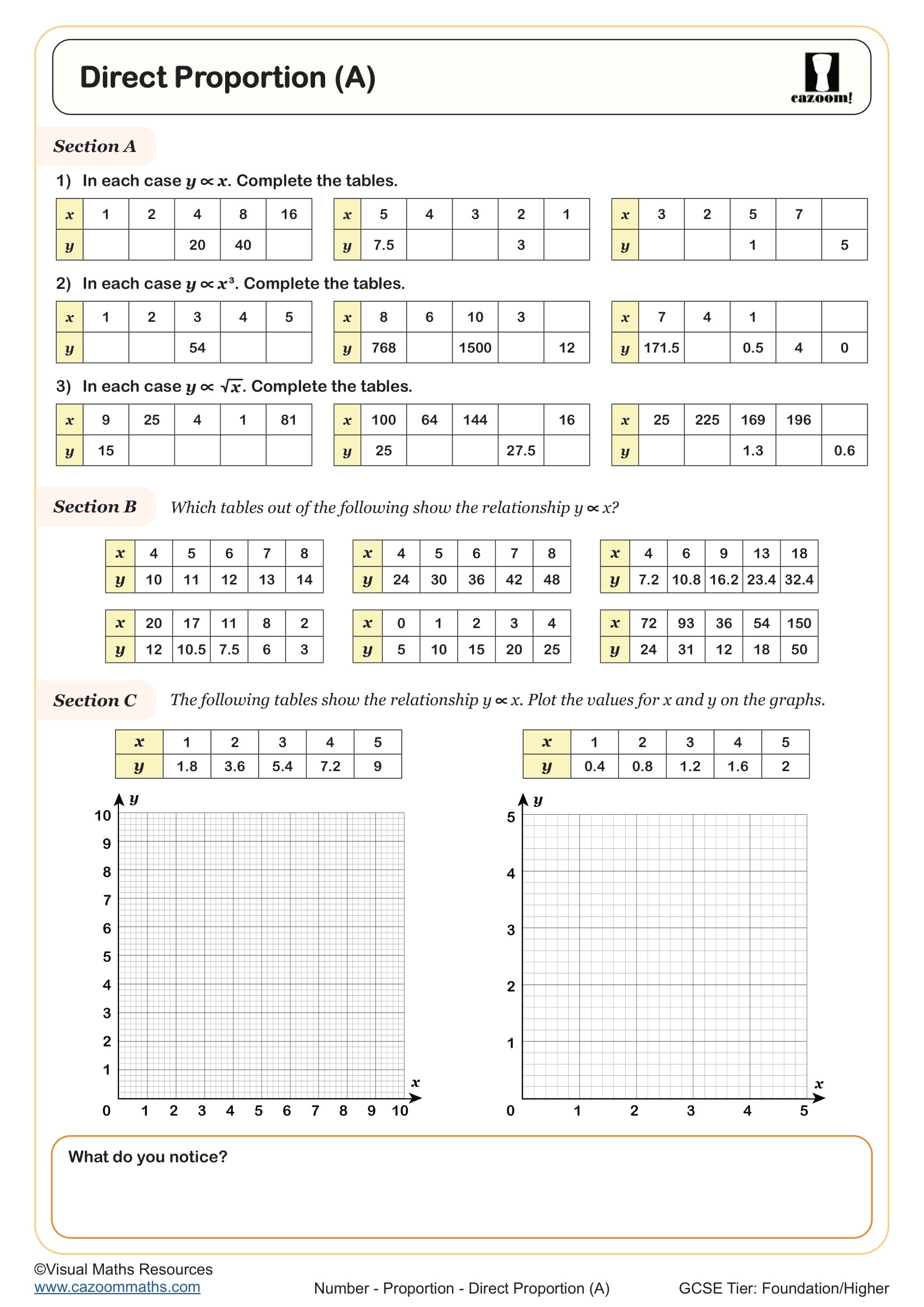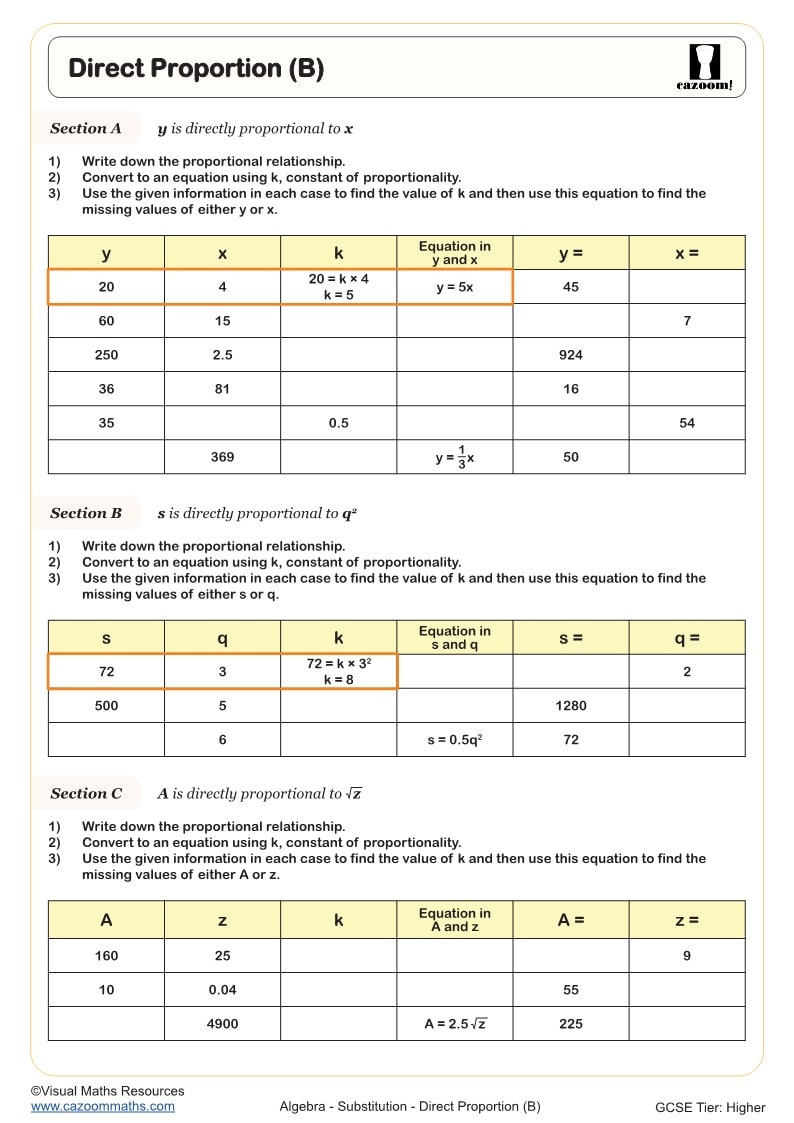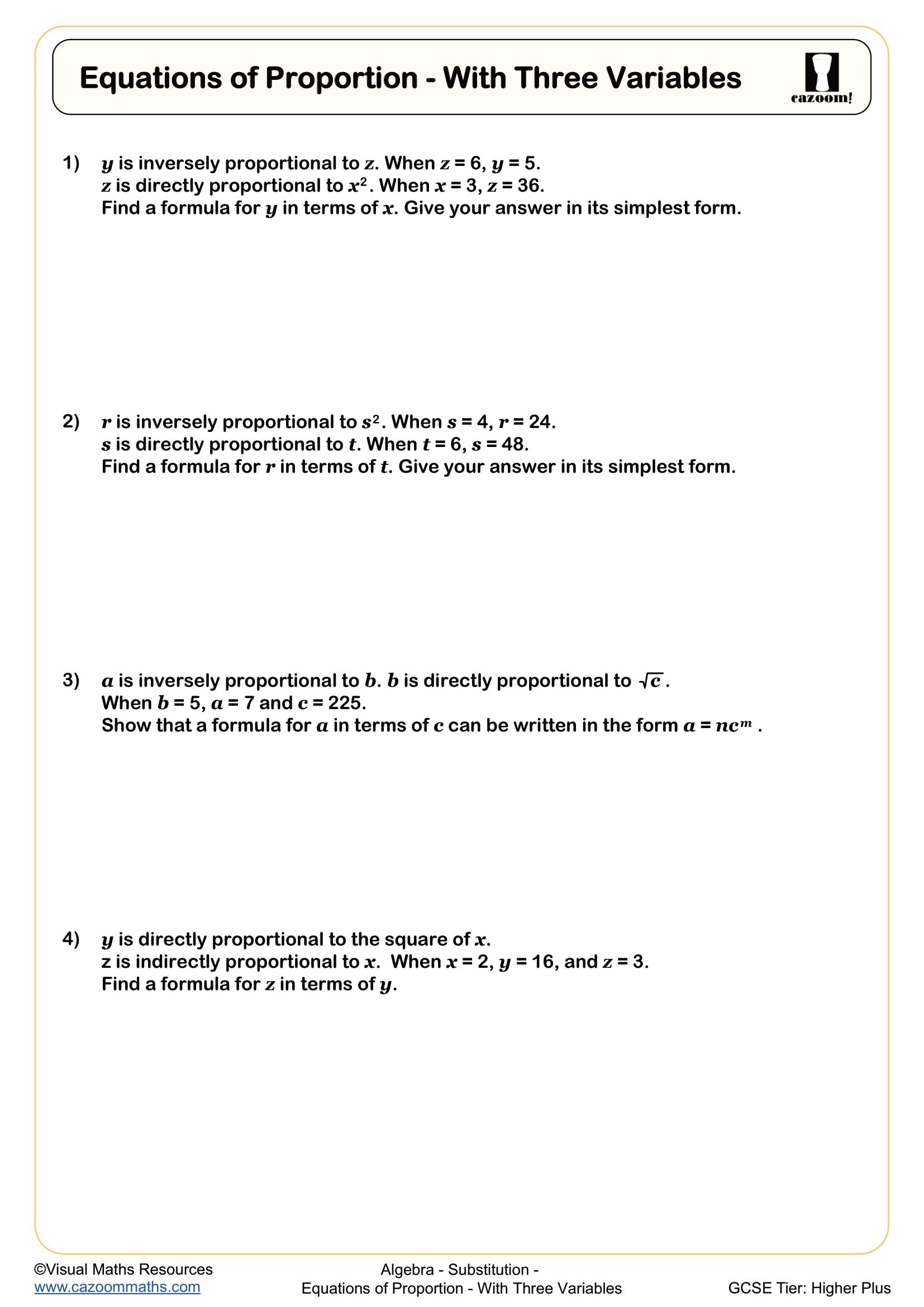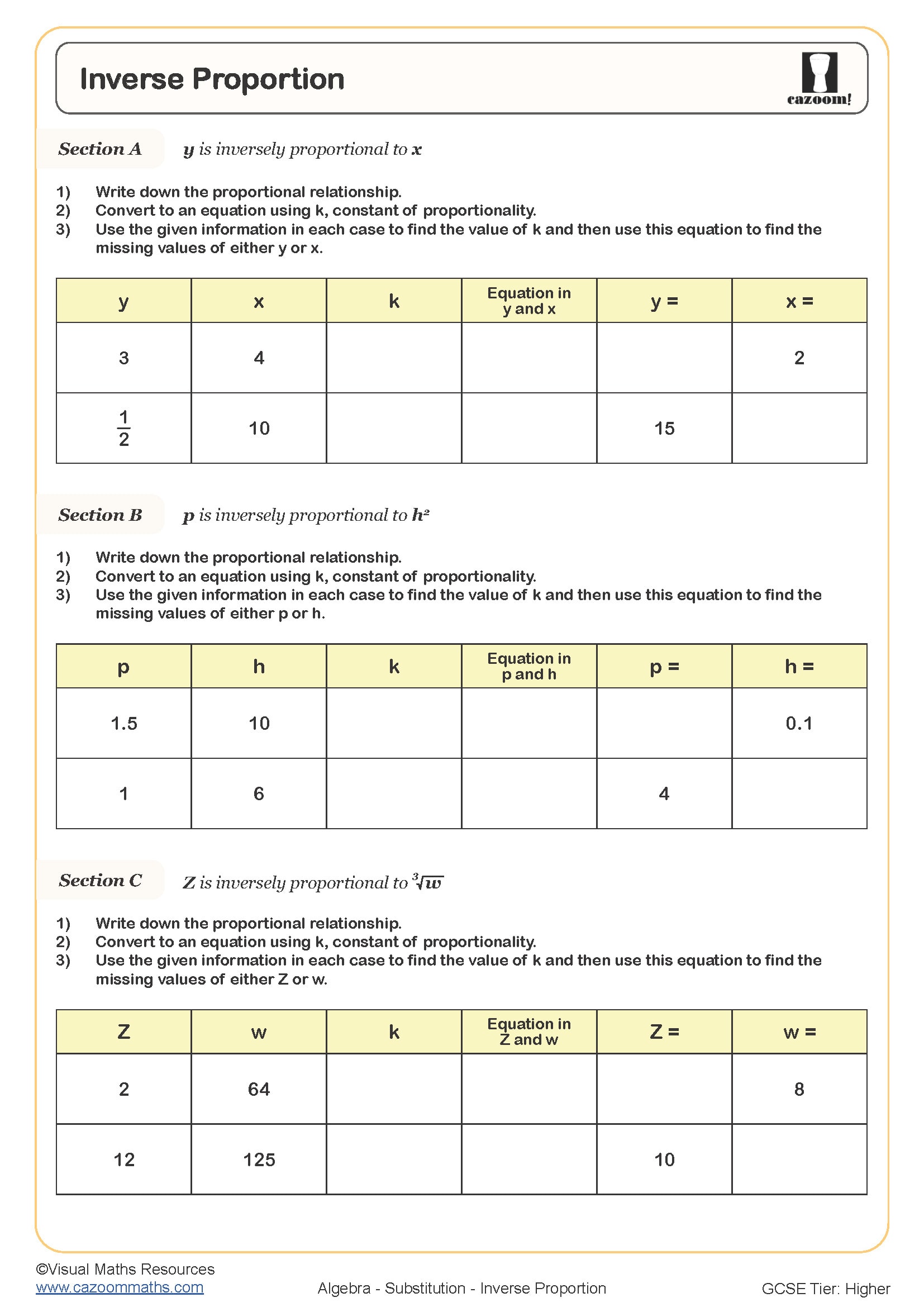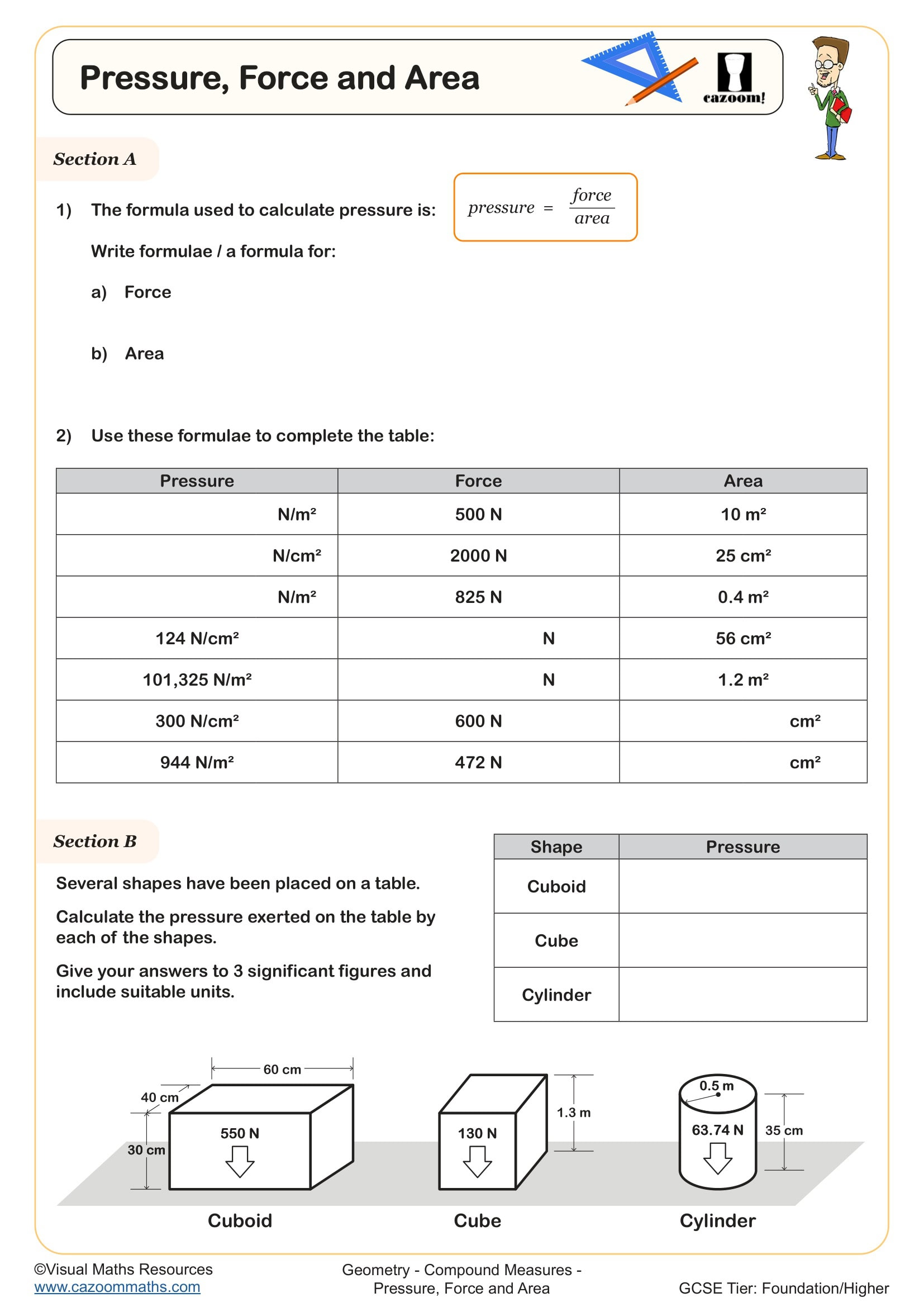Year 11 Proportion Worksheets
GCSE Proportion Worksheets PDF Downloads with Detailed Answer Keys
Here's the thing about finding quality proportion questions - most resources either oversimplify the concepts or jump straight into exam-level complexity without proper scaffolding. We've created something different. These downloadable worksheets include detailed solutions that show the complete thinking process, not just final answers. Students get to see exactly how experienced mathematicians approach inverse and direct proportion questions, making those "lightbulb moments" much more likely to happen.
What Proportion Skills Are Covered in These Year 11 Practice Questions?
The progression moves from basic ratio work through to complex inverse proportion practice questions that mirror GCSE exam standards. Students particularly love the real-world scenarios (they're surprisingly engaging), and we've included plenty of those tricky questions on proportion that typically appear in Paper 2. The variety keeps lessons fresh while building the systematic approach that examiners are looking for.
Why Year 11 Students Need Regular Proportion Practice Worksheets
Teaching GCSE classes for years, we've noticed something consistent - students who regularly tackle proportionality questions perform significantly better in mock exams and the real thing. There's something about repeated practice that builds the pattern recognition they need. These worksheets are perfect for homework, cover lessons, or targeted revision sessions.
Key benefits our teachers report:
• Exam confidence boost - students recognise question types instantly
• Method consolidation - clear steps become automatic responses
• Error reduction - common mistakes get identified and corrected early
• Speed improvement - calculations become faster and more accurate
• Understanding depth - concepts stick rather than just memorised procedures
Real-World Applications Where Students Actually Use Proportion Skills
Students always ask, "When will I ever use this?" - and honestly, proportion appears everywhere once you start noticing it. These skills connect beautifully with physics (particularly mechanics), geography (scale and population density), and even art (golden ratio and perspective). It's actually quite satisfying when students start spotting proportional relationships in their other subjects and everyday situations.
Where proportion skills matter:
• Recipe scaling - adjusting ingredients for different serving sizes
• Map reading - calculating real distances from scale representations
• Currency conversion - working out exchange rates and travel costs
• Medication dosages - understanding body weight to dose relationships
• Engineering projects - scaling blueprints and technical drawings
• Business calculations - profit margins, percentage increases, and growth rates
